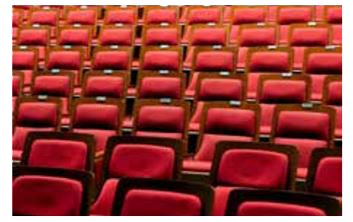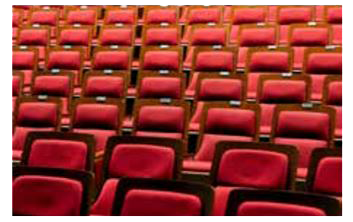Students of a class are made to sit in rows of equal number of chairs. If number of students is increased by 2 in each row, then the number of rows decreases by 3. If number of students is increased by 4 in each row, then the number of rows decreases by 5. What is the number of students in the class?
100
105
110
120
To solve the problem, we will define the variables and set up equations based on the information given in the question.
Step 1: Define the Variables
Let:
- A = number of rows
- B = number of students in each row
Step 2: Write the Total Number of Students
The total number of students in the class can be expressed as:
Total Students=A×B
Step 3: Set Up the First Condition
According to the first condition, if the number of students is increased by 2 in each row, then the number of rows decreases by 3. This can be expressed as:
(A−3)(B+2)=A×B
Expanding this equation gives:
AB+2A−3B−6=AB
Simplifying this, we get:
2A−3B=6(Equation 1)
Step 4: Set Up the Second Condition
According to the second condition, if the number of students is increased by 4 in each row, then the number of rows decreases by 5. This can be expressed as:
(A−5)(B+4)=A×B
Expanding this equation gives:
AB+4A−5B−20=AB
Simplifying this, we get:
4A−5B=20(Equation 2)
Step 5: Solve the System of Equations
Now we have two equations:
1. 2A−3B=6
2. 4A−5B=20
We can solve these equations simultaneously. First, we can multiply Equation 1 by 2:
4A−6B=12(Equation 3)
Now we can subtract Equation 2 from Equation 3:
(4A−6B)−(4A−5B)=12−20
This simplifies to:
−B=−8⇒B=8
Step 6: Substitute Back to Find A
Now that we have B=8, we can substitute this value back into Equation 1 to find A:
2A−3(8)=6
This simplifies to:
2A−24=6⇒2A=30⇒A=15
Step 7: Calculate Total Number of Students
Now we can find the total number of students:
Total Students=A×B=15×8=120
Final Answer
The number of students in the class is 120.
Let:
- A = number of rows
- B = number of students in each row
The total number of students in the class can be expressed as:
Total Students=A×B
According to the first condition, if the number of students is increased by 2 in each row, then the number of rows decreases by 3. This can be expressed as:
(A−3)(B+2)=A×B
Expanding this equation gives:
AB+2A−3B−6=AB
Simplifying this, we get:
2A−3B=6(Equation 1)
According to the second condition, if the number of students is increased by 4 in each row, then the number of rows decreases by 5. This can be expressed as:
(A−5)(B+4)=A×B
Expanding this equation gives:
AB+4A−5B−20=AB
Simplifying this, we get:
4A−5B=20(Equation 2)
Now we have two equations:
1. 2A−3B=6
2. 4A−5B=20
4A−6B=12(Equation 3)
(4A−6B)−(4A−5B)=12−20
This simplifies to:
−B=−8⇒B=8
Now that we have B=8, we can substitute this value back into Equation 1 to find A:
2A−3(8)=6
This simplifies to:
2A−24=6⇒2A=30⇒A=15
Now we can find the total number of students:
Total Students=A×B=15×8=120
The number of students in the class is 120.
Similar Questions
Students of a class are made to stand in rows. If 4 students are extra in each row, then there would be 2 rows less. If four students are less in each row, then there would be 4 more rows. What is the number of students in the class?
View SolutionStudents of a class are made to stand in row. If one student is extra in each row, there would be 2 rows less. If one student is less in each row, there would be 3 rows more. Find the number of students in the calss.
View Solution
Knowledge Check
The number of rows in a lecture hall equals the number of seats in a row. If the number of rows is reduced by 10, the number of seats is increased by 300. If x denotes the number of rows in the lecture hall, then what is the value of x?
A10B15C20D30The proportion of students in three classes is 3:4:5 . If the number of students is increased by 20 in each class, then the proportion changes to 4:5:6 . What is the initial number of students in the three classes taken together ?
A300B280C320D240In an auditorium, seats are arranged in rows and columns. The number of rows were equal to the number of seats in each row. When the number of rows were doubled and the number of seats in each row was reduced by 10, the total number of seats increased by 300.

How many number of seats are there in the auditorium in original arrangement ?A725B400C900D680
Students of a class are made to stand in rows. If one student is extra in a row, there would be two rows less. If one student is less in a row, there would be three rows more. What is the number of students in the class ?
View SolutionStudents are made to stand in rows . If one student is extra in a row there would be 2 rows less . If one student is less in a row there would be 3 rows more . Find the number of students in the class .
View SolutionStudants of a school were made to satand in rows for drill. If 3 student less were standing in each raw, 10 more rows were required and if 5 students more were standing in each row then the number of rows was reduced by 10. Find the number of students participating in the drill.
View SolutionIn an auditorium, seats are arranged in rows was equal to the number of seats in each row. When the number of rows was doubled and the number of seats in each row was reduced by 10, the total number of seats increased by 300. Find the number of rows in original arrangement.
View SolutionIn an auditorium, seats are arranged in rows and columns. The number of rows were equal to the number of seats in each row. When the number of rows were doubled and the number of seats in each row was reduced by 10, the total number of seats increased by 300.

How many number of seats are there in the auditorium after re-arrangement.
View Solution
